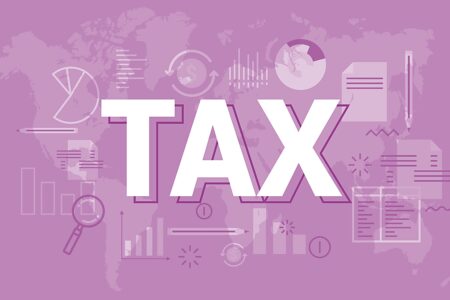Instead, her focus was on tightening public spending, an action which means the Treasury’s spotlight now turns to 11 June, when the deferred three-year spending review is due to be published.
In the interim, underlining the swirl of economic uncertainty surrounding any forecast, 2 April is scheduled as “Liberation Day” in the US, when Donald Trump reveals his “reciprocal” tariffs.
In this summary, you will find details of the Chancellor’s key announcements and the economic forecasts:
- Government spending
- Welfare measures
- Tax administration measures
- ISAs
- Home Office fees
- Economic update
KEY ANNOUNCEMENTS
The net effect of the Chancellor’s Spring Statement was to raise a projected £14 billion in 2029/30. However, Rachel Reeves did not only talk about spending reductions in her speech. The Chancellor also revealed fresh investment initiatives. For example:
- The capital spending total for the Parliament was increased by £13 billion, with the extra funds to be directed at growth-focused areas such as infrastructure, housing and defence innovation.
- The creation of a new £3.25 billion Transformation Fund to support the reform of public services. Examples of the expenditure include £8 million for new technology for the probation service, £25 million for the fostering system and £150 million for “government employee exit schemes”.
The main revenue raising measures, many of which had been trailed in recent days, included the following.
Government spending
The pace of annual growth in government spending for 2025/26–2029/30 will be reduced by 0.1% in real terms to 1.2%. Government departments will reduce their administrative budgets by 15% by the end of the decade, creating projected savings of £2.2 billion a year.
Welfare measures
Personal Independence Payment (PIP) reform
From November 2026 for new claimants, and for existing claimants at their next award review following that date, a tougher qualification basis will apply. Claimants will need to score a minimum of four points in at least one activity to qualify for a daily living award. This change, alongside an increased capacity for processing award reviews from April 2026, is projected to produce savings of over £4.5 billion by 2029/30.
Abandonment of Work Capability Assessment changes
The descriptor reforms to the Work Capability Assessment (WCA) announced at Autumn Statement 2023 that were due to take effect this year will be cancelled. This is at a cost of £1,645 million in 2029/30. From April 2026 WCA assessments will restart, generating savings of £355 million by 2029/30.
Freezing the Universal Credit Health Element (UCHE)
From 2026/27, the award rate of UCHE will be frozen for existing claimants, and new claimants will receive a lower award of £50 a week (also frozen). This freeze will last through to 2029/30 and generate £3 billion of savings that year.
Universal Credit Standard Allowance: increase above inflation
In parallel with the changes to the Health Element, the Standard Allowance for Universal Credit will be uplifted above inflation for new and existing claimants, reaching CPI + 5% by April 2029. The cost of this will be nearly £1.9 billion by 2029/30.
Welfare fraud and error
Increased checks on potential Universal Credit claimants and the recruitment of 500 more fraud and error staff are projected to produce £240 million of savings by 2029/30.
Tax administration measures
Tax debt collection
Additional funding will be provided to increase HMRC’s debt management capacity by expanding the use of third-party debt collection agencies. In addition, HMRC will recruit an extra 500 compliance staff, starting in April 2025 and 600 more debt management staff, starting in April 2026. Together, these moves are projected to raise an extra £810 million by 2029/30.
Increase in late payment penalties
Late payment penalties for VAT and Making Tax Digital (MTD) for income tax self-assessment (ITSA) will increase from April 2025. The new rates will be:
- 3% of the tax outstanding where tax is overdue by 15 days; plus
- 3% where tax is overdue by 30 days; plus
- 10% per annum where tax is overdue by 31 days or more.
The higher penalties are projected to raise £125 million by 2029/30.
Expanded rollout of MTD for income tax self-assessment
From April 2028, MTD for ITSA will apply to taxpayers with trading or property income over £20,000. The threshold from April 2026 is £50,000 – dropping to £30,000 in April 2027. This is projected to generate £120 million in 2029/30.
High Income Child Benefit Charge (HICBC)
From summer 2025, Child Benefit claimants (or their partners) who are employed and newly liable for HICBC will be able to pay the tax charge through Pay As You Earn (PAYE). This will remove the requirement to submit a self-assessment tax return.
Consultations
Consultation papers have been issued on:
- Behavioural penalty reform, covering HMRC inaccuracy and failure to notify penalties.
- Enhancing HMRC’s ability to tackle tax advisers facilitating non‑compliance.
- Closing in on promoters of marketed tax avoidance.
- Advance Tax Certainty for Major Projects.
- R&D reliefs advance clearances.
- Exemption from Stamp Duty and Stamp Duty Reserve Tax for the Private Intermittent Securities and Capital Exchange System (PISCES).
ISAs
Options for reforms of Individual Savings Accounts “that get the balance right between cash and equities to earn better returns for savers” are being examined by the Treasury.
Home Office fees
A range of Home Office fees will rise from 9 April 2025, including fees for Electronic Travel Authorisation (ETA), visas, sponsorship, immigration, nationality and passports. The level of increases ranges from 5% for some visas to 120% for Certificates of Sponsorship. These increases are projected to produce £400 million additional income by 2029/30.
ECONOMIC UPDATE
When Rachel Reeves presented her premiere Budget on 30 October 2024, there was already a sense of economic gloom. Her revelation in the previous July of a £22 billion ‘black hole’ in the public finances had cast a pall across the following three months. Speculation mounted over how it would be filled.
The Autumn 2024 Budget arrived with UK growth having already slowed to just 0.2% in the three months to August, after the first quarter of the year had recorded a 0.7% rate. Nevertheless, the OBR projected that in 2025 the economy would grow by 2.0% and only slow marginally to a 1.8% expansion in 2026.
The Chancellor’s Budget measures were projected to raise over £40 billion a year in additional tax by 2029/30, with over half coming from the increases to employers’ national insurance contributions.
Reeves used the extra tax revenue, the OBR’s assumed growth recovery and the borrowing relaxation provided by her new fiscal rules to increase spending by over £70 billion a year. In doing so, she left herself only £9.9 billion of headroom against her main 2029/30 target of a balanced current budget.
In its Economic and Fiscal Outlook (EFO) at the time, the OBR observed this was “…around one-third of the average headroom Chancellors have set aside against their fiscal targets” since 2010.
Since October, a combination of slower-than-projected growth and higher-than-projected interest rates have vindicated the OBR’s subtle warning. The February government borrowing figures, released the week before the Statement, showed that with a month to go before the end of the financial year, the deficit was already £4.7 billion above the OBR’s October projection for the whole of 2024/25. Interest paid on government debt to date has exceeded £80 billion.
In its newly published EFO for March, the OBR has increased its projection of the budget deficit for the current year by £9.8 billion. It has also altered its assumptions for the key UK economic factors:
- Growth is now projected to be 1.0% for 2025, half the previous projection. However, thereafter growth is projected to be higher in every future year of the forecast, with each of the three years from 2027 projected to have 0.2% higher growth.
- Average inflation in 2025 is projected to be 3.2% (formerly 2.6%) and 2.1% in 2026 (down from the previous 2.3% projection).
- Market gilt rates are projected to be 4.5% in 2025/26 and 4.7% in 2026/27, 0.4% higher for both years than in the October 2024 EFO.
Without the various spending announcements made in the Spring Statement, the Chancellor’s headroom against her main fiscal target would have shrunk by £14 billion, meaning she would have missed it by £4.1 billion.
Including the announced changes has allowed the OBR to restore the headroom figure to its October 2024 level of £9.9 billion. The OBR notes, “This remains a small margin against the risk of further shocks to interest rates, productivity, or global trade.”
£9.9 billion of headroom disappeared over the last five months, and there are now probably another seven months until what looks to be another important Budget.
Summary
The Spring Statement was not meant to be a March mini-Budget, despite what many headlines in the days before suggested. As we usually say after a Chancellor’s announcement, the devil is in the detail. As the Treasury releases the papers behind the headlines and proposed consultations, we will closely monitor what these mean for our clients.
In the meantime, if you wish to discuss how the Spring Statement will impact you, please do talk with your usual Shipleys’ contact.
This summary is based on the Chancellor’s Spring Statement 2025, supplemented by information from official publications. Specific advice should be obtained before taking action, or refraining from taking action, on the basis of this information.
© 2025 Shipleys LLP















